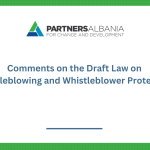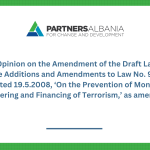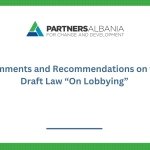LEGAL OPINION
On the amendment to Article 8, paragraph 3 of the draft law “On some additions and amendments to Law no. 9917, dated 19.5.2008, ‘On the prevention of money laundering and financing of terrorism,’ as amended.”
1. Object of the Opinion
This legal opinion aims to assess the proposed amendment to Article 8, point 3, of the draft law, which foresees that after the phrase “nonprofit organisations,” the words “considered as high-risk” be added. The purpose of this addition is to align with Recommendation 8 of the Financial Action Task Force (FATF).
2. Legal Framework and International Standards
FATF Recommendation 8 requires states to identify and protect nonprofit organisations that are more vulnerable to abuse for terrorist financing purposes. FATF explicitly emphasizes that measures must be risk-based and proportionate, without stigmatising the entire non-profit sector. In FATF’s official interpretation, the term used is “non-profit organisations that are vulnerable to terrorist abuse”, not “high-risk organisations”.
The use of the term “considered as high-risk” presents several issues such as: a) there is no legal definition of who determines such classification and on what basis; b) it creates the risk of subjective interpretation by authorities; and c) it carries a negative connotation that may harm the reputation of organisations placed under this category.
In practice, it may be perceived as an unfair labelling rather than a proportionate preventive measure.
3. Terminological Analysis and FATF Compliance
The proposed amendment does not fully align with the FATF’s philosophy. FATF calls for the identification of organisations with a “potential for abuse”, meaning those that, due to their nature, funding sources, or field of activity, are exposed to the risk of abuse, without being inherently “high-risk.” This distinction is essential because the term “high-risk” carries an evaluative and punitive implication, while “potential for abuse” is neutral and consistent with the principle of proportionality.
4. Practical and Reputational Consequences
Using the term “high-risk” may have reputational consequences for nonprofit organisations, affecting their relationships with donors, international partners, and the community. In the absence of a transparent classification mechanism and a right to appeal, this could infringe upon freedom of association and the constitutional principles of proportionality and legal certainty.
5. Assessment of Compliance with FATF Recommendation 8
The proposed amendment improves the legal approach by emphasizing risk-based assessment, yet it remains formal rather than substantive in aligning with the requirements of
Recommendation 8. FATF requires that such measures be based on the National Risk Assessment (NRA) and defined according to its findings, an element missing in the current formulation.
Conclusions and Recommendations
In conclusion, the amendment to Article 8, point 3, represents a positive step toward compliance with international standards, but it requires terminological and methodological clarification to align fully with FATF’s philosophy and reccomendation. The use of the term “high-risk” should be replaced with more careful wording, consistent with the principles of proportionality, transparency, and protection of the non-profit sector’s reputation.
In this context, the following changes are recommended:
- Revision of terminology
Replace the phrase “considered as high-risk” with:
“…nonprofit organisations with a high potential for abuse for terrorist financing purposes, based on the results of the national risk assessment.”
This version reflects FATF language, avoids negative connotations, and maintains legal neutrality.
- Definition of responsible authority and methodological basis
The law or a sub-legal act should clearly define which competent body classifies NPOs according to risk and on which risk assessment criteria (in line with Article 23/1 on the National Risk Assessment in the draft law).
- Explicit link to the National Risk Assessment (NRA)
The legal text should make explicit reference that the categorisation of NPOs as “potentially vulnerable to abuse” is based on NRA results, to avoid subjectivity and ensure interinstitutional coherence.
- Creation of transparency and appeal mechanisms
NPOs should have the right to be informed of the reasons for their classification and to have access to administrative appeal or periodic review of their status.
- Adoption of explanatory Sub-Legal Acts and use of existing methodological basis
A specific instruction or decision of the Council of Ministers should be adopted to define assessment criteria, monitoring procedures, and cooperation methods between supervisory institutions and the nonprofit sector. It is worth noting that the first risk assessment methodology for the nonprofit sector was developed by Partners Albania, in cooperation with the General Directorate of Taxation. This methodology has been recognised and cited in the latest National Risk Assessment and provides a solid foundation for official adoption, as it was built according to FATF definitions of the nonprofit sector within the AML/CTF framework.
- Ensuring proportionality and protection of sector reputation
Such measures should be applied proportionately and with reputational care, so as not to negatively affect the credibility and legitimate mission of nonprofit organisations.






